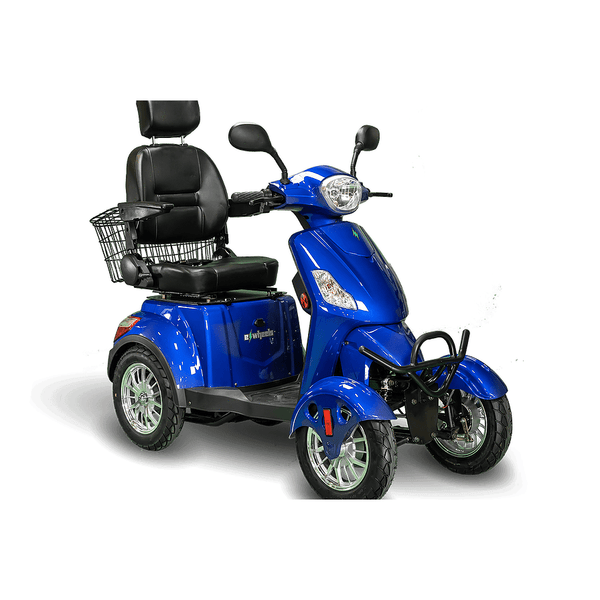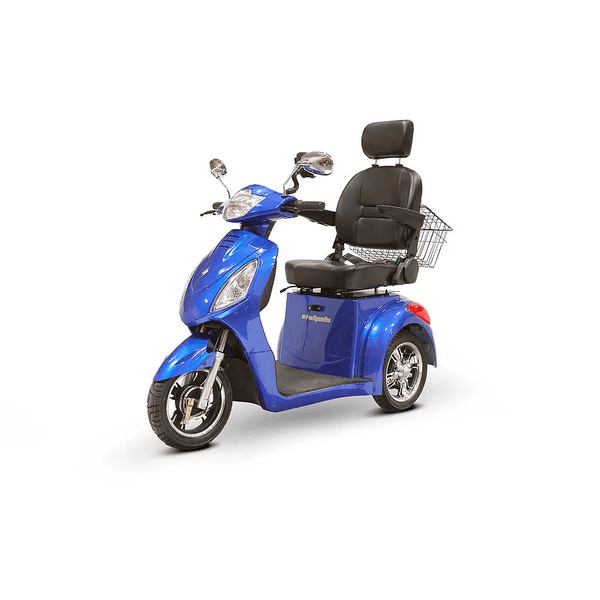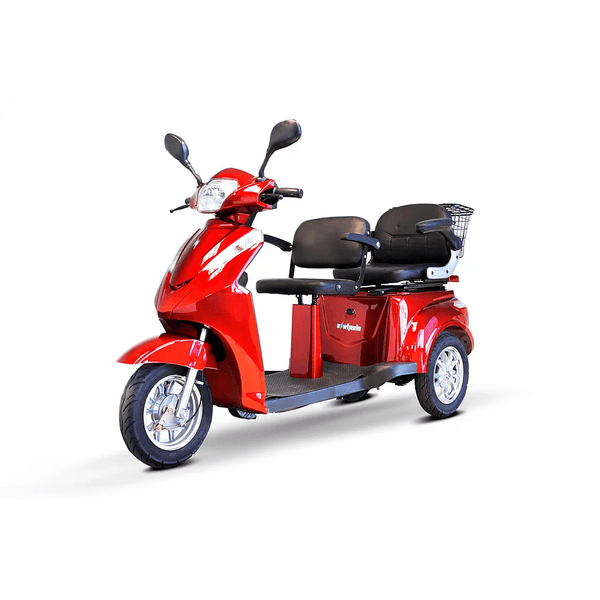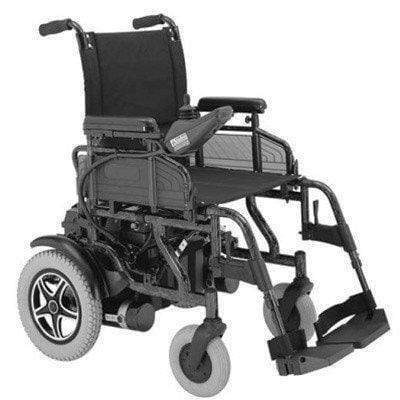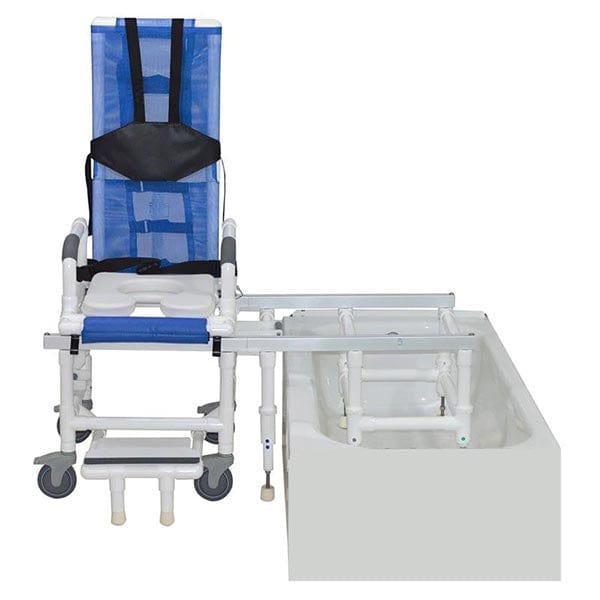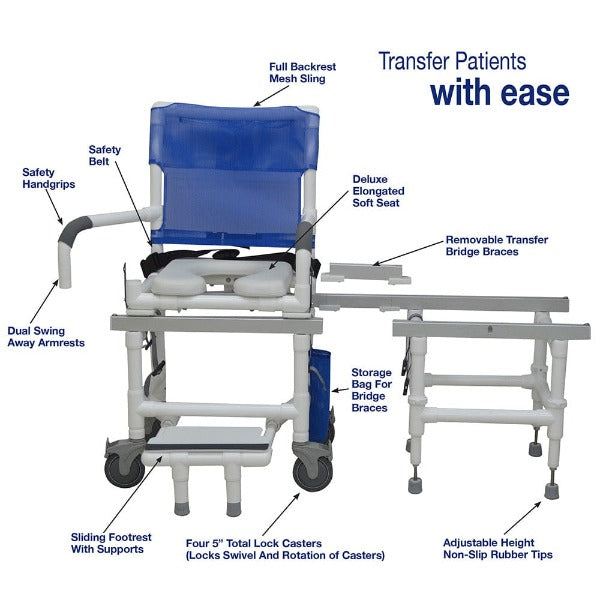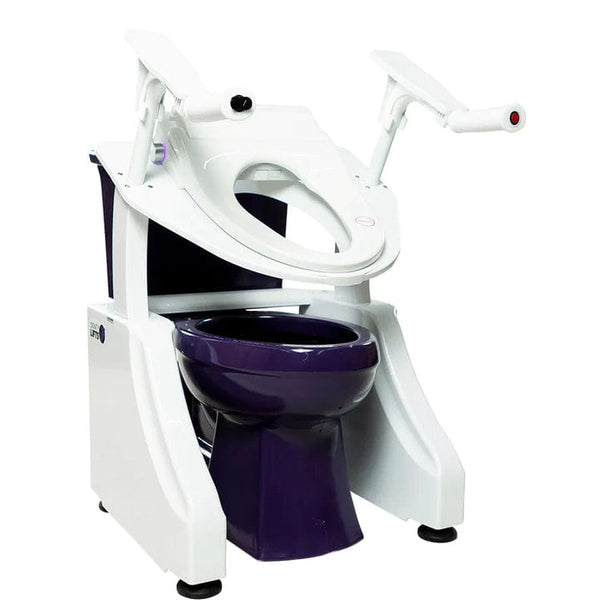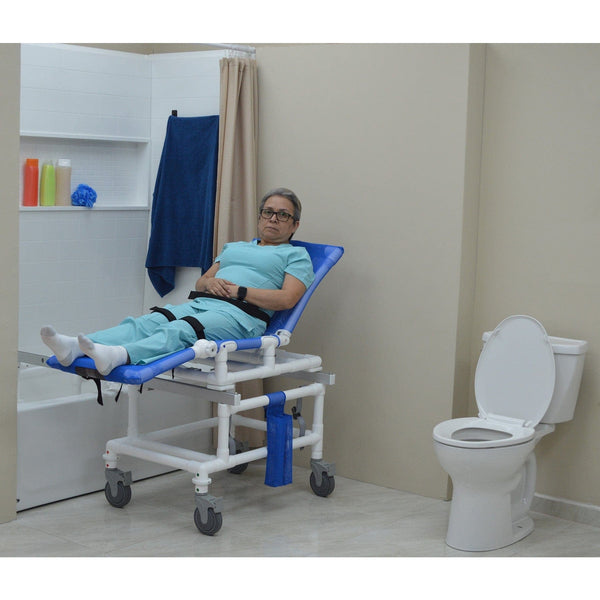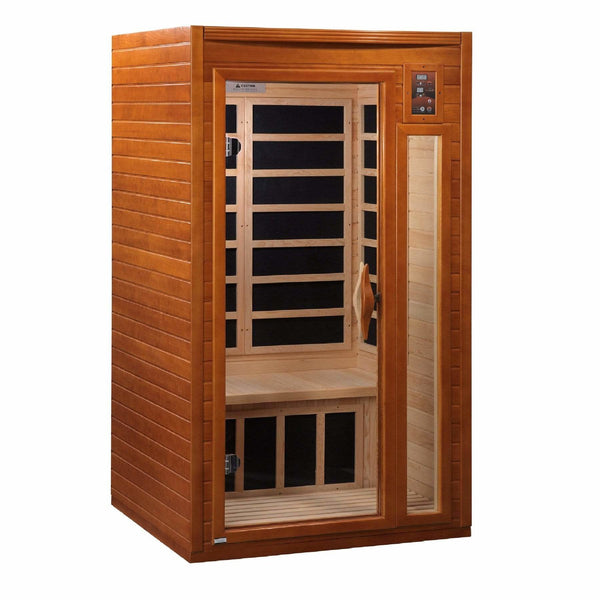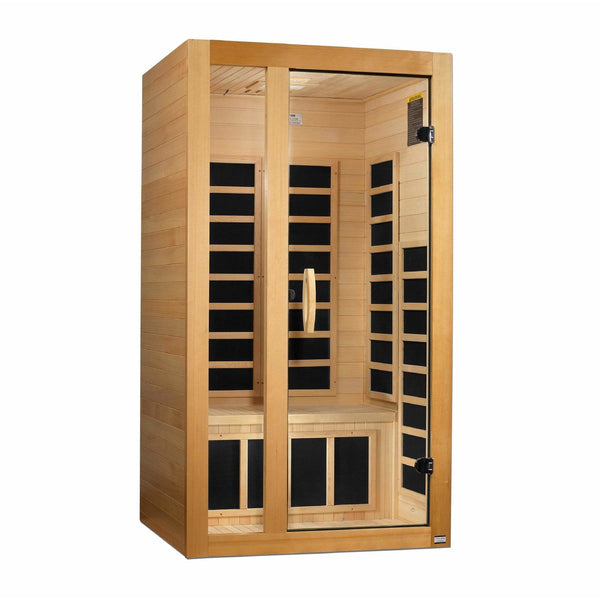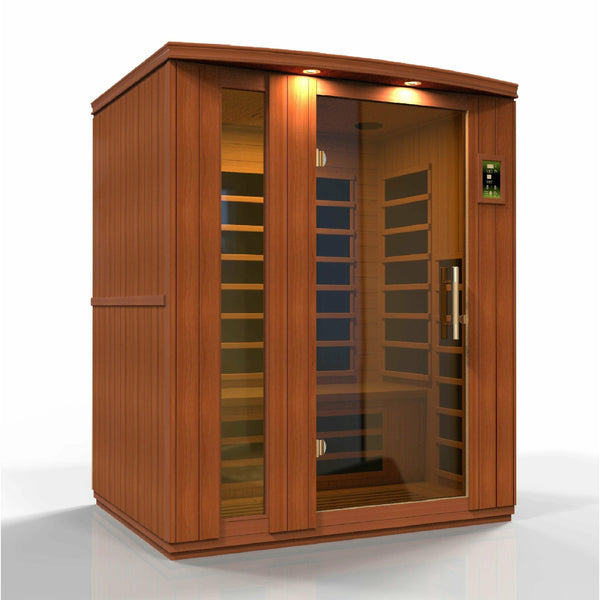Chances are, you’ve come across numerous types of mobility wheelchairs. Whether through reading or in person.
Mobility wheelchairs aren’t a one-size-fits-all affair. They come in different types suited for different needs. And with technological advancement, we get to see even more types invented.
In this post, we fully tell you the different types of mobility wheelchairs, their pros and cons, and what you should consider getting.
Method of Propulsion
When categorizing mobility wheelchairs by their method of propulsion, there are two types: manual and electric wheelchairs.
Manual Wheelchairs
Check out our collection of manual wheelchairs.

Best For: Individuals seeking cost-effective mobility solutions, those with good upper body strength.
Manual wheelchairs are the oldest types of mobility wheelchairs. As their name suggests, they require users to propel themselves using their physical effort or through a caregiver. They don’t have a motor or battery of some sort.
These wheelchairs are cost-effective, versatile, and are available in different designs. Most of them are foldable, which makes them easy to transport and store. Their seats are also adjustable for a comfortable fit.
Manual wheelchairs have two large rear wheels, which users use to self-propel, and smaller front ones.
Pros:
- Highly affordable
- Are generally lightweight and foldable
- Are low maintenance
- Come with exercise benefits
Cons:
- Are tiresome
- Not suited for long distances
- Make users dependent on caregivers, limiting their independence
- Most aren’t designed for rough terrains
Electric Mobility Wheelchairs

Check out our collection of electric wheelchairs.
Best For: Users who value convenience and independence
Electric wheelchairs are powered by electric motors and are an alternative to manual wheelchairs. The motor propels the wheelchair and provides effortless movements.
These wheelchairs are invaluable resources for users who value independence and convenience daily. They come with a joystick mounted on one of the armrests to control the speed and direction of the chair.
Some models have advanced features such as seat elevation, recline and standing functions, and tilt-in-space. All these are for convenience and added comfort.
Pros:
- They require minimal physical effort from users
- Have a longer range than manual wheelchairs
- Are usually more comfortable and feature customization options
Cons:
- More expensive than manual wheelchairs.
-
Require periodic battery replacement and maintenance.
Weight Capacity
You can also classify wheelchairs by their weight capacity.
Lightweight Wheelchairs

Best For: Lightweight users
The lighter, the better, right?
Lightweight electric wheelchairs are designed to prioritize portability, mobility, and ease of use. As such, their weight capacities are low compared to standard and bariatric wheelchairs.
They weigh between 30 to 35 lbs, while ultra-lightweight models weigh less than 30 pounds. The wheelchairs are easy to use and highly adjustable. They are also customizable, foldable, and as such, easy to transport and store.
These wheelchairs have a maximum weight limit of 250 lbs.
Pros:
- Are agile and can navigate through confined spaces easily.
- Foldable and thus easy to transport and store.
- Come with ergonomic features for enhanced comfort.
Cons:
- Their weight capacities limit the people who can use them.
-
They may not be as robust as bariatric wheelchairs.
Standard Weight Wheelchairs
Best For: These are designed for a broad spectrum of users (250 to 450 lbs). They are suited for everyday use in settings like homes and public spaces.
Standard-weight wheelchairs are versatile and suited for different users and environments. They balance weight, durability, and functionality.
While these wheelchairs are heavier than lightweight models (36 to 50 lbs), they are still manageable. They have a maximum weight limit of around 250 to 400 pounds. Most are foldable, making them easy to store and transport.
Pros:
- They are durable and will withstand everyday abuse.
- They are often affordable
- They are versatile and will accommodate a wide range of users with different needs
Cons:
-
They are heavier and less portable than lightweight models.
Bariatric Wheelchairs

Best For: Heavy-weight users (400+ pounds)
Check out our heavy-duty and bariatric wheelchairs
Also known as heavy-duty wheelchairs, bariatric mobility wheelchairs are designed for users with higher weight requirements.
They have a significantly higher weight capacity, ranging from 400 to 700+ pounds. The wheelchairs provide heavier users with enhanced comfort, support, and mobility.
Bariatric wheelchairs are constructed using reinforced components and frames to ensure they can handle the extra weight. Their seats are also made wider with a higher weight distribution.
Similarly, their rear wheels are normally larger for improved weight distribution and stability. Don’t forget safety precautions when using bariatric wheelchairs. Secure your safety
Pros:
- Provides heavier users with the ideal support and safety.
- They are built durable to withstand the demands of heavy users.
- Their wider seating options make them comfortable.
Cons:
- Since they are heavier and bulkier, they become less portable.
-
They are usually more expensive than the lightweight and standard models.
Pediatric Wheelchairs
Best For: Children with mobility impairments
Kids and smaller individuals have their custom wheelchairs, the pediatric wheelchairs. These are tailored to meet their unique needs, offering support, comfort and mobility.
The wheelchairs are more compact and proportionally smaller than adult wheelchairs. Most have adjustable features to accommodate your child’s growth. These include adjustable seat height, width and depth ensuring a proper fit.
Manufacturers often incorporate vibrant colors and designs into these wheelchairs to make them appealing to kids. Additionally, safety is a top priority for them. They have safety belts, stability features and anti-tipping devices to hold kids securely in place.
Pros:
- They provide a proper fit for children
- They are customizable to a child’s unique requirements.
- They provide a child with mobility and independence to move around and engage in daily activities.
Cons:
- Kids outgrow them quickly, and you’ll have to upgrade frequently.
- They are designed primarily for indoors and controlled environments.
Wheel Position
When it comes to the wheel positioning, there are three types of mobility wheelchairs.
Front-Wheel
Best For: Indoors, crowded areas and tight spaces like shopping centers and offices.
As their name suggests, these wheelchairs use the front wheel for propulsion. The front wheels are larger and are responsible for the chair’s turning and movement.
This design makes them highly maneuverable, as you can control them in tight spaces. The wheels are further equipped with anti-tip casters to prevent loss of balance and tipping.
The wheelchairs’ seats are often adjustable, and they have a joystick on one of the armrests for control. Some models come with suspension systems for improved comfort and performance.
Pros:
- They have excellent maneuverability, especially in tight corners and confined spaces.
- The joystick control allows for easier and accurate navigation.
- The wheelchairs are very stable, thanks to the anti-tip casters.
Cons:
- Not the best options for outdoors and rough terrains.
Mid-Wheel

Check out our collection of Mid-Wheel Mobility Wheelchairs
Best For: Everyday use both indoors and outdoors
Mid-wheel wheelchairs feature a unique six-wheel configuration. The drive wheels are located at the center of the wheelchair. The structure provides them with optimal maneuverability and precise control.
The middle set of wheels responsible for movement and propulsion are designed larger. The front and rear castor wheels are smaller and are responsible for making the wheelchair stable and preventing tipping.
Like the front wheel, these also have their seating adjustable and come with suspension for a smoother ride and better user experience.
Pros:
- They are versatile and suited for both indoors and outdoors.
- The joystick provides precise control and allows for accurate positioning and easy control.
- The design makes the chair very stable and reduces the risk of tipping.
Cons:
-
They require more frequent maintenance than other wheelchair types.
Rear-Wheel

Check out our collection of Rear-Wheel Mobility Wheelchairs
Best For: Outdoor use
Yes, you guessed right!
The wheels responsible for the propulsion and movement of rear-wheel wheelchairs are located at the rear. The front wheels are designed smaller and are primarily for support.
This design makes these wheelchairs excellent for outdoor use. They can handle curbs, rough surfaces, and uneven terrains more effectively.
The anti-tip feature of the front wheels makes these wheelchairs stable. You are less likely to tip or fall when climbing ramps or incurring obstacles.
Pros:
- They are highly stable and less prone to tipping.
- The positioning of the drive wheels gives them a smooth and comfortable ride.
- Excellent for outdoor use
Cons:
- Less maneuverable in confined spaces and crowded areas.
-
Not the best for indoor use.
Unique Designs
Standing Mobility wheelchairs

Check out our collection of Standing Mobility Wheelchairs
Best For: Individuals with mobility challenges who want to enjoy the benefits of standing.
These are arguably the coolest and most innovative mobility wheelchairs in our collection.
Standing wheelchairs transition users from a seated to a standing position. They elevate you gradually to ensure safety and stability.
This is made possible by their elevator-like structure where the seat is mounted. You can propel yourself when standing.
Apart from improving your health and well-being, standing wheelchairs also come with their psychological benefits. They allow users to actively participate in activities, leading to a more fulfilling life.
Pros:
- Improves users' independence and allows them to perform more tasks.
- Improves social interaction, especially in group activities.
- Boosts a user’s mood, confidence, and self-esteem.
Cons:
- Are typically more expensive
-
It may take time to learn and adapt
Beach Wheelchairs

Check out: Vipamat Hippocampe Beach All-Terrain Wheelchair
Best For: People with mobility issues who want to access the beach comfortably and safely.
Just because you are in a wheelchair doesn’t mean you can’t enjoy a sunny afternoon at the beach. Beach wheelchairs are for those who want to access sandy beaches and participate in related activities.
They are characterized by their large and wide balloon-like tires. The tires will float on sand and provide stability on uneven terrains.
The wheelchairs are designed to be as lightweight as possible. Manufacturers use materials like aluminum in the construction.
Another crucial feature is their corrosion resistance. Since they are used in sand and saltwater, it’s important that their materials be corrosion-resistant.
Pros:
- Makes accessing the beach, which would otherwise be difficult, possible.
- They are durable thanks to their corrosion resistance feature.
- Their stability reduces the risks of falls and accidents.
Cons:
- Their use is only limited to sandy beaches and not any other terrains.
-
They are designed for everyday use in indoor and outdoor spaces.
Mobility Scooters
Check out our extensive collection of mobility scooters.
This one feels like a cheat because mobility scooters are different equipment from wheelchairs. But scooters help you maneuver, and most have seats, so why not have them here?
Like electric wheelchairs, mobility scooters are battery-powered and have rechargeable batteries. Most have handlebars or tillers for steering. Users can control the speed and direction of the scooter.
One major difference between scooters and wheelchairs is their seating. Mobility scooters have different seating settings, from standing to two-seater and three-seater scooters.
They are faster than wheelchairs and often better-looking. Definitely worth your time and money!
Conclusion
From manual to beach wheelchairs, these machines are changing the lives of countless users. They provide individuals with mobility challenges the independence to maneuver with little or no assistance.
At the heart of it all, mobility wheelchairs, regardless of the type, provide users with the freedom to engage, move, and live life to the fullest. Contact us today, and we’ll help you choose the right wheelchair for your needs. Let’s embark on this journey together.




